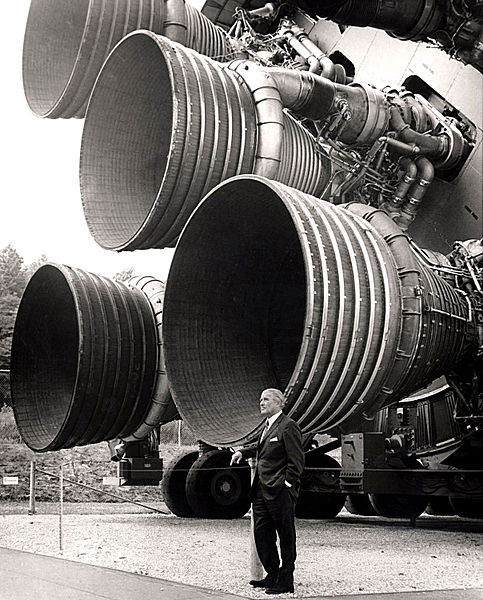It looks like you're using an Ad Blocker.
Please white-list or disable AboveTopSecret.com in your ad-blocking tool.
Thank you.
Some features of ATS will be disabled while you continue to use an ad-blocker.
share:
a reply to: Bedlam
I have enjoyed your posts! Informative and also provides a look into how the space program affected a generation of kids. Another of my book treasures was one about the Mercury 7 astronauts, my heroes at the time. It was in the local toy store book rack, and I believe I was about 7 or 8 years old when it was bought for me. At the time, unfortunately, women astronauts "didn't exist", so it wasn't until I was about 10, that I finally had a female hero in space, Russian Cosmonaut Valentina Tereshkova.
a reply to: Quantum12
Thank you for the link. So, there are more uses for borax than adding to the wash water! Interesting about the EU ban. My concern with the article is that his "note" at the bottom should have been at the top.
Quantum, do you know about public viewing of rocket launches at Vandenberg AFB? It's up the coast. We have friends who have driven over once in a while to see some; worst thing is when you show up and a launch gets scrubbed. Now that we're retired, we're thinking of driving over sometime with them.
I have enjoyed your posts! Informative and also provides a look into how the space program affected a generation of kids. Another of my book treasures was one about the Mercury 7 astronauts, my heroes at the time. It was in the local toy store book rack, and I believe I was about 7 or 8 years old when it was bought for me. At the time, unfortunately, women astronauts "didn't exist", so it wasn't until I was about 10, that I finally had a female hero in space, Russian Cosmonaut Valentina Tereshkova.
a reply to: Quantum12
Thank you for the link. So, there are more uses for borax than adding to the wash water! Interesting about the EU ban. My concern with the article is that his "note" at the bottom should have been at the top.
Quantum, do you know about public viewing of rocket launches at Vandenberg AFB? It's up the coast. We have friends who have driven over once in a while to see some; worst thing is when you show up and a launch gets scrubbed. Now that we're retired, we're thinking of driving over sometime with them.
a reply to: 3danimator2014
"the green flame" does sound interesting! Hey, I didn't know about this until very recently....
ocean rocket launches!
wiki on the Odyssey launch platform
a reply to: carewemust
Scram jet developments seem to have been a major thrust (pun intended) in propulsion. Nice article on hypersonic scramjets.... but still a combo of systems is needed....
another good article
Incredible Technology: How to Launch Superfast Trips to Mars
"the green flame" does sound interesting! Hey, I didn't know about this until very recently....
ocean rocket launches!
wiki on the Odyssey launch platform
a reply to: carewemust
Scram jet developments seem to have been a major thrust (pun intended) in propulsion. Nice article on hypersonic scramjets.... but still a combo of systems is needed....
The most practical concept at the moment is the turbine-based combined cycle, says Goyne. So, in this case, he says, a gas turbine or a turbojet engine used to takeoff on the runway and accelerate up to the scramjet takeover speed.
another good article
Incredible Technology: How to Launch Superfast Trips to Mars
edit on 15-3-2016 by desert because: ETA quote
a reply to: desert
I didn't know about those ocean launches either.. i knew that SpaceX used to launch from a tiny island on the south Pacific which I always thought was pretty cool.
I'm planning on heading over to the States next year to see the eclipse in Aug and we are going to swing by Florida to see some family friends. I'm hoping that there will be a launch from Canaveral that we can go see. I've never seen one and am dying to.
I didn't know about those ocean launches either.. i knew that SpaceX used to launch from a tiny island on the south Pacific which I always thought was pretty cool.
I'm planning on heading over to the States next year to see the eclipse in Aug and we are going to swing by Florida to see some family friends. I'm hoping that there will be a launch from Canaveral that we can go see. I've never seen one and am dying to.
a reply to: 3danimator2014
3danimator2014, if you make it to Santa Monica we can swing by VandenbergAFB to watch a launch. I want to see one too!
3danimator2014, if you make it to Santa Monica we can swing by VandenbergAFB to watch a launch. I want to see one too!
originally posted by: Quantum12
a reply to: 3danimator2014
3danimator2014, if you make it to Santa Monica we can swing by VandenbergAFB to watch a launch. I want to see one too!
I dont think i will be im afraid. The plan as it stands is Nebraska and Port st Lucie in Florida. But enjoy it if you do go. Make sure to show us video and pics
a reply to: Quantum12
I read an interview somewhere of an astronaut, and he was describing what it was like being launched into space. I wish I could find a link to it. It was unreal the way he described the sensations; especially the feeling of constant acceleration. He said that at a certain point you begin to tell yourself the acceleration simply has to stop soon, but it doesn't. You just keep going faster and faster and faster... I've always thought how great it would be to experience that feeling before I checkout. But, it doesn't look like it's in the stars for me.
So, you live in Santa Monica, eh? I've lived there before. Nice town. Most of my life, though, I lived in Venice Beach. I ended up moving to Redondo primarily to get closer to work. I like it; got a decent place right on the beach. Life is good.
Let the Good Times Roll...
I read an interview somewhere of an astronaut, and he was describing what it was like being launched into space. I wish I could find a link to it. It was unreal the way he described the sensations; especially the feeling of constant acceleration. He said that at a certain point you begin to tell yourself the acceleration simply has to stop soon, but it doesn't. You just keep going faster and faster and faster... I've always thought how great it would be to experience that feeling before I checkout. But, it doesn't look like it's in the stars for me.
So, you live in Santa Monica, eh? I've lived there before. Nice town. Most of my life, though, I lived in Venice Beach. I ended up moving to Redondo primarily to get closer to work. I like it; got a decent place right on the beach. Life is good.
Let the Good Times Roll...
a reply to: 3danimator2014
Wish I could, Animator, but the photos I was referring to are mounted on the wall in the Huntsville division of the place I work for. I work in the LA offices, which is a couple thousand miles from Huntsville.
I've always been a fan of the Space Program. It seems to me to be one of the few noble endeavors of mankind. If I find anything (pics/vids) worth posting I'll pass it along. The vid you posted is definately a keeper - I saved it.
Have fun...
Wish I could, Animator, but the photos I was referring to are mounted on the wall in the Huntsville division of the place I work for. I work in the LA offices, which is a couple thousand miles from Huntsville.
I've always been a fan of the Space Program. It seems to me to be one of the few noble endeavors of mankind. If I find anything (pics/vids) worth posting I'll pass it along. The vid you posted is definately a keeper - I saved it.
Have fun...
a reply to: Quantum12
Quantum, I think you meant to say Vandenberg AFB is North of you, not South.
Anyway, when they send up rockets from Vandenberg AFB you can often see the exhaust trail in the sky from Santa Monica, as well as other beach communities. You know the trails aren't from airplanes because they usually appear to go straight up into the sky.
I don't know if the public is allowed to view launches closeup at Vandenberg, though, since they're mostly military related payloads. They have a website where you can view the anticipated launch schedule - maybe it has more info about public viewing of launches.
Quantum, I think you meant to say Vandenberg AFB is North of you, not South.
Anyway, when they send up rockets from Vandenberg AFB you can often see the exhaust trail in the sky from Santa Monica, as well as other beach communities. You know the trails aren't from airplanes because they usually appear to go straight up into the sky.
I don't know if the public is allowed to view launches closeup at Vandenberg, though, since they're mostly military related payloads. They have a website where you can view the anticipated launch schedule - maybe it has more info about public viewing of launches.
originally posted by: netbound
Anyway, when they send up rockets from Vandenberg AFB you can often see the exhaust trail in the sky from Santa Monica, as well as other beach communities. You know the trails aren't from airplanes because they usually appear to go straight up into the sky.
That's not necessarily always true. A contrail from a plane that is flying directly toward a point above your head from over the horizon, or one that is flying directly away from a point over your as it heads over the horizon could appear as if it is flying straight up or straight down -- but it only appears that way due to a trick of perspective.
Away from you, toward the horizon:

Toward you, from the horizon:

a reply to: netbound
Yes I meant north. I was not thinking!
Yes from where I live I can see the rocket trail! It's is hard to tell some days when there are contrails or chemtrails. Thank you for correcting my south to north!
Yes I meant north. I was not thinking!
Yes from where I live I can see the rocket trail! It's is hard to tell some days when there are contrails or chemtrails. Thank you for correcting my south to north!
edit on 15-3-2016 by Quantum12 because: (no reason given)
originally posted by: BASSPLYR
a reply to: Bedlam
random question. how does one shower in space? is there like some space shammy you use or a giant sponge? always wanted to know.
also, is there nausea associated with the weightlessness initially or is it not so bad and more like swimming underwater?
You stand on a pad and pull a sort of fabric tube from the floor up to an overhead ring/cap where it attaches with velcro. There's a downdraft blower thingy that keeps the water moving the right way.
You get used to it eventually. Or not.
Thought I would share what I ran across recently....
Russia Actually Lights Rockets With an Oversized Wooden Match
also....
a reply to: BASSPLYR
Packing for Mars by Mary Roach is a great read about living in outer space. I sure learned a lot, enough to know that I really would rather stay Earthbound and dream about Space.
Russia Actually Lights Rockets With an Oversized Wooden Match
This setup is not as simple as a regular match, but it is surprisingly reliable and has worked for six decades on hundreds of rockets. Yet on March 12, during the first attempt to launch the new Russian satellite for Earth observation, one of the "matches" failed to fire after the ignition command was issued. It was enough of a problem for the launch control system, which detected the lack of signal from the failed igniter, to call off the propellant injection into combustion chambers. The launch was aborted just a moment before liftoff, and the fully fueled rocket remained safely on the pad.
That's when the wooden PZU demonstrated another amazing quality: a quick turnaround. It took launch personnel in Baikonur Cosmodrome in Kazakhstan less than 24 hours to fix the ignition system, re-fuel the rocket, and go for another attempt on March 13, which was successful. If some more complex ignition system had been involved, the mission would probably have to be postponed longer.
Over the years, rocket engineers around the world have invented new schemes to light up rocket engines, with some even involving lasers. However, the long-running Soyuz that still carries people and satellites to orbit relies on its 1950s-era design. By most accounts, PZU is the only surviving component in today's rockets that is made out of wood.
also....
a reply to: BASSPLYR
Packing for Mars by Mary Roach is a great read about living in outer space. I sure learned a lot, enough to know that I really would rather stay Earthbound and dream about Space.
originally posted by: wildespace
And just for a size reference for the OP's video:
We have gone, in just over 100 years, from the Wright Bros to THOSE. Mind boggling. I have an intense obsession with rocket engines. I even bought a $180 dollar copy of an out of print book on the history of rocket fuel called Ignition! Its my favourite book to flick though.
Watching countless youtube videos of engines like this (and airplane jet engines) operate is probably the geekiest thing i do by far
originally posted by: Quantum12
a reply to: 3danimator2014
And no not even a space shuttle! Sad
Give it time.
a reply to: 3danimator2014
Ok, I finally found another person to whom I could recommend this book
Transiting from Air to Space: The North American X-15 (NASA Historical Series) by Richard Houston, Richard Hallion, Ronald Boston
As was pointed out in reviews, it came up short on flight narratives and was more into development, which included its rocket engine development! Anyway, you might want to file it away for a future read while on vacation. I read it as an ebook.
Ok, I finally found another person to whom I could recommend this book
Transiting from Air to Space: The North American X-15 (NASA Historical Series) by Richard Houston, Richard Hallion, Ronald Boston
As was pointed out in reviews, it came up short on flight narratives and was more into development, which included its rocket engine development! Anyway, you might want to file it away for a future read while on vacation. I read it as an ebook.
new topics
-
The Witcher IV — Cinematic Reveal Trailer | The Game Awards 2024
Video Games: 25 minutes ago -
Friday thoughts
General Chit Chat: 1 hours ago -
More Ons?
Political Conspiracies: 1 hours ago -
Canada Post strike ended by the Government of Canada
Mainstream News: 1 hours ago -
They Know
Aliens and UFOs: 5 hours ago -
Drones (QUESTION) TERMINATOR (QUESTION)
General Chit Chat: 7 hours ago -
Canada Banning more Shovels
General Chit Chat: 10 hours ago
top topics
-
They Know
Aliens and UFOs: 5 hours ago, 15 flags -
Canada Banning more Shovels
General Chit Chat: 10 hours ago, 10 flags -
The goal of UFO's/ fallen angels doesn't need to be questioned - It can be discerned
Aliens and UFOs: 16 hours ago, 6 flags -
More Ons?
Political Conspiracies: 1 hours ago, 3 flags -
Friday thoughts
General Chit Chat: 1 hours ago, 3 flags -
A priest who sexually assaulted a sleeping man on a train has been jailed for 16 months.
Social Issues and Civil Unrest: 16 hours ago, 2 flags -
Canada Post strike ended by the Government of Canada
Mainstream News: 1 hours ago, 2 flags -
Drones (QUESTION) TERMINATOR (QUESTION)
General Chit Chat: 7 hours ago, 1 flags -
The Witcher IV — Cinematic Reveal Trailer | The Game Awards 2024
Video Games: 25 minutes ago, 0 flags
active topics
-
-@TH3WH17ERABB17- -Q- ---TIME TO SHOW THE WORLD--- -Part- --44--
Dissecting Disinformation • 3665 • : fringeofthefringe -
More Ons?
Political Conspiracies • 9 • : Astrocometus -
A Bunch of Maybe Drones Just Flew Across Hillsborough County
Aircraft Projects • 38 • : matafuchs -
Drones everywhere in New Jersey
Aliens and UFOs • 102 • : matafuchs -
They Know
Aliens and UFOs • 42 • : ChaoticOrder -
Canada Post strike ended by the Government of Canada
Mainstream News • 3 • : AdultMaleHumanUK -
TRUMP: Release Hostages or there will be HELL TO PAY
US Political Madness • 69 • : Oldcarpy2 -
Friday thoughts
General Chit Chat • 3 • : BeyondKnowledge3 -
The Witcher IV — Cinematic Reveal Trailer | The Game Awards 2024
Video Games • 0 • : gortex -
Jan 6th truth is starting to leak out.
US Political Madness • 28 • : BernnieJGato

